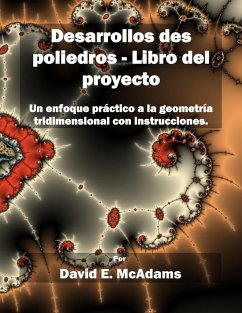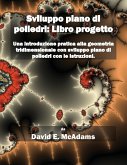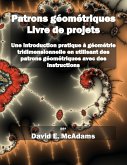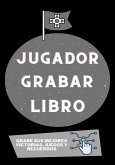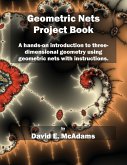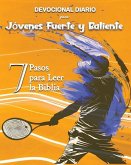¡Las desarrollos des poliedros brindan muchas horas de diversión fascinante! Cada red representa la superficie de una forma geométrica única. Algunas de las formas fueron descritas hace 2500 años. Una desarrollos des poliedros es un dibujo plano que se puede cortar y doblar para formar una figura tridimensional. Por ejemplo, seis cuadrados idénticos se pueden convertir en un cubo. Esto se debe a que un cubo tiene seis lados, todos los cuales son cuadrados idénticos. Cada uno de los dibujos de este libro se puede cortar y doblar para formar un objeto geométrico tridimensional. Este libro contiene 80 desarrollos des poliedros, que incluyen: Antiprisma triangular bialargada Cono Cubo Cuboctaedro Cilindro Antiprisma Dekagonal Prisma decagonal Icositetraedro deltoidal Dado Hexaquisoctaedro Dodecaedro regular Cúpula pentagonal alargado Bipirámide pentagonal alargado Pirámide pentagonal alargado Bipirámide cuadrada alargada Pirámide cuadrada alargada Antiprisma triangular alargado Cúpula triangular alargado Bipirámide triangular alargado Pirámide triangular alargado Tronco de pirámide decagonal Tronco de pirámide cuadrilátera Tronco de pirámide triangular Gran Dodecaedro Gran dodecaedro estrellado Giroelongada pirámide pentagonal Dipirámide cuadrado giroelongada Prisma cuadrado giroelongada Giroelongada pirámide cuadrada Pirámide heptagonal Heptaedro 4,4,4,3,3,3,3 Heptaedro 5,5,5,4,4,4,3 Heptaedro 6,6,4,4,4,3,3 Prisma hexagonal Pirámide hexagonal Hexaedro 4,4,4,4,3,3 Hexaedro 5,4,4,3,3,3 Hexaedro 5,5,4,4,3,3 Icosaedro regular Icosidodecaedro Pirámide cuadrada oblicua Antiprisma oktagonal Octaedro regular Antiprisma Pentagonal Cúpula pentagonal Bipirámide pentagonal Prisma pentagonal Pirámide pentagonal Rotonda pentagonal Prisma pentagramma Pirámide rectangular Prisma rómbico Rombicuboctaedro Pequeño rhombidodecaedro Dodecaedro estrellado Pequeño Cubo romo Dodecaedro romo Antiprisma cuadrado Cúpula cuadrada Pirámide cuadrado Trapezoedro cuadrada Estrella goctángula Tetraedro regular Tetraquishexaedro Triaquisoctaedro Triaquistetraedro Cúpula triangular Bipirámide triangular Triangular pentaedro Prisma triangular Pirámide triangular oblicua Cubo truncado Cuboctaedro truncado Dodecaedro truncado Icosaedro truncado Truncado icosidodecaedro Octaedro truncado Tetraedro truncado Pirámide estrella pentagonal derecho Trapezoedro cuadrado truncado
Bitte wählen Sie Ihr Anliegen aus.
Rechnungen
Retourenschein anfordern
Bestellstatus
Storno

